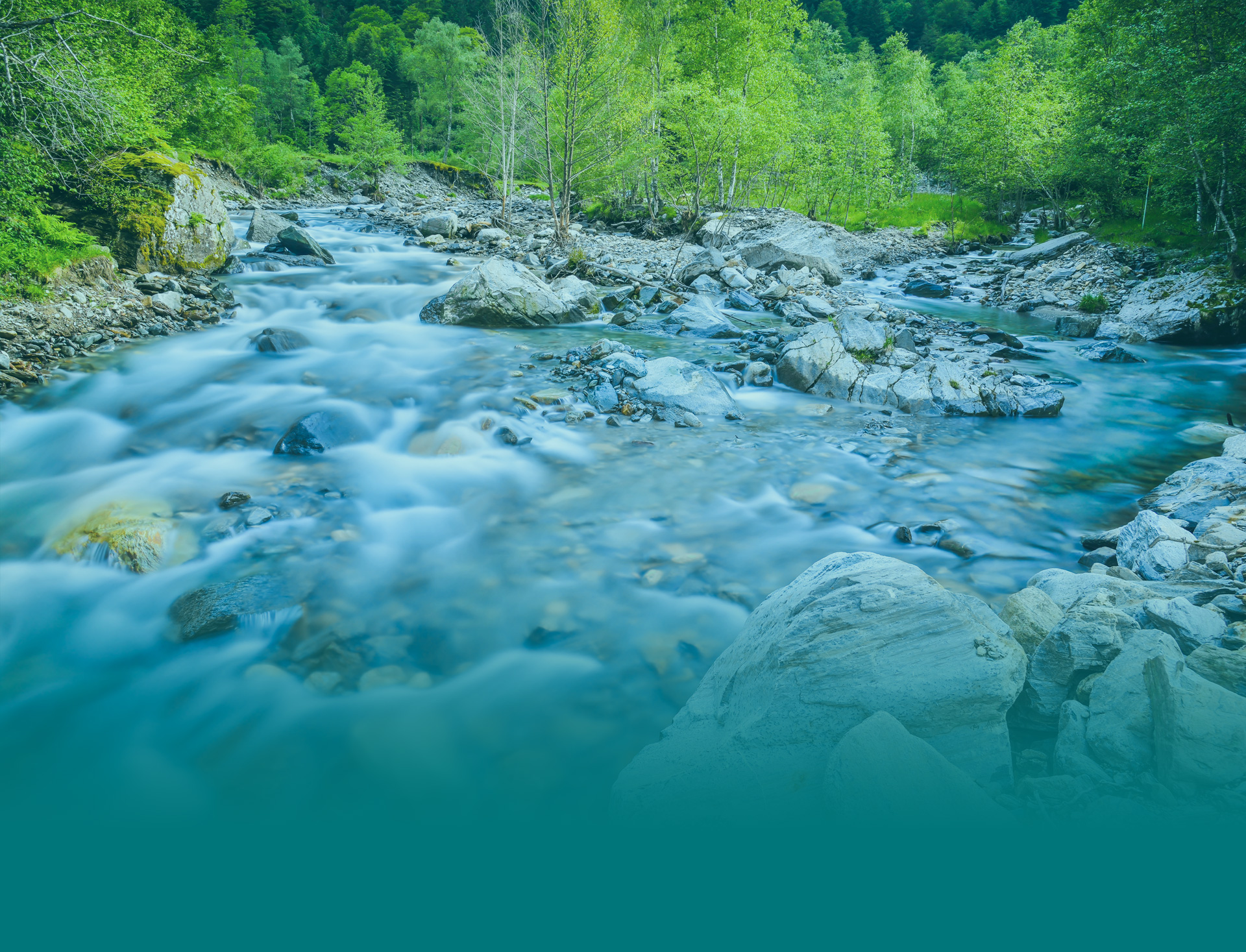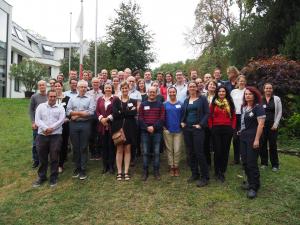Agenda: Available online
Presentations: See bottom of page
Synthesis: Available online
The one day event, Shaping AQUACROSS Research and Strengthening Impact provided an opportunity for AQUACROSS researchers, case study representatives and members of the AQUACROSS Science Policy Business Think Tank (SPBTT) to exchange about key management challenges relevant to the case studies and identify critical points for action to ensure impact and legacy of the project. The day brought together 40 members of the AQUACROSS consortium, three members of the AQUACROSS SPBTT, and five representatives from AQUACROSS’s Case Studies. The SPBTT is AQAUCROSS’s external advisory board, made up of experts and leaders from across EU, to support the project with conceptual guidance and expertise. Case Study Representatives are experts in the context of their local case study, and offer essential guidance on the practical application of AQUACROSS within their local regions.
The meeting considered two key topics. After reflecting on progress made by AQUACROSS to date, the morning session focused on the practical application of ecosystem-based management (EBM) for the protection of aquatic biodiversity in the Case Studies. The afternoon session considered the potential legacy of the project – in terms of scientific and policy integration and impact, business development, and long-term contribution to society – and how this impact can be maximised over the last year of the project and beyond.
The AQUACROSS approach is being co-developed with as well as implemented and validated in eight case studies throughout Europe. The work in the case studies is embedded in all parts of the project to ensure information exchange, integration across ecosystems, as well as interaction between disciplines. With their broad geographic distribution and diverse scales, realms, and challenges, the Case Studies were selected to test ecosystem-based management in diverse settings and to showcase specific elements of the EU Biodiversity Strategy.
Figure: Links between AQUACROSS Case Studies and Targets of the EU Biodiversity Strategy to 2020
The meeting provided an opportunity to present progress with the work in the case studies and extract relevant lessons from their comparison. Key threats to biodiversity identified in the case studies include extraction of species associated with fishing, habitat sealing, noise, and hydromorphological alterations due to hydro- and wind power development, invasive alien species, and nitrogen and other waste and pollution, among others. Case Studies in AQUACROSS consider a wide range of research questions and challenges relevant to ecosystem based management. A key objective of the case studies is increasing scientific and stakeholder knowledge, and ensuring that decision making is based on the best available knowledge. Identifying tradeoffs between competing societal objectives is also a central theme – be that between hydropower and biodiversity in the Danube and Swiss case studies, or fishing and tourism outcomes in the Azores case study, for example. In all of the case studies, the increase in knowledge aims to support stakeholder decision making and prioritising of management options. Transboundary and multi-level management challenges also abound – for example, in the Morocco-Spain Intercontinental Biosphere Reserve and the multi-river basin and international Danube case studies. Stakeholder engagement and participation, cross-sectoral and transboundary cooperation, and governance – and how these can best improve biodiversity management – are also key themes within the case studies.
A number of these challenges are apparent in the Danube Case Study, which was presented in depth in the morning session. The case study focuses on balancing the ecosystem services provided by hydro dams with the biodiversity impacts of damming the Danube (and the flow on effects on ecosystem functioning, ecosystem services, and ultimately society). Local stakeholder ICPDR (International Commission for the Protection of the Danube River) provided positive and constructive feedback, which included messages relevant for all case studies. In particular, ICPDR emphasized the importance of translating science into action, and ensuring that the AQUACROSS research was focused on practical policy implementation. This, and the incorporation of stakeholder input and co-creation, was a key take away from the session.
The focus of the afternoon sessions was to identify key pathways to impact of AQUACROSS results and findings – and how to maximise their breadth and reach in order to ensure meaningful and long-lasting legacy of the project.
Presentations on achieving impact with the scientific, global and business impact communities were made by Daniel Hering (University Duisburg-Essen, coordinator of the FP7 MARS project), John Matthews (Alliance for Global Water Adaptation, AGWA) and Christine Valentin of the World Ocean Council fueled the discussion. Their presentations focused on the mechanism and audiences for AQUACROSS’s research. Key messages from the presentations and follow-up discussions include:
- Science impact comes through scientific publications and to a lesser extent presentations. Participants agreed that a special issue on AQUACROSS research and a number of summary papers should be a focus of the final year.
- To impact policy, different mechanisms are required. Case study representatives recommended succinct key messages and personal interactions in order to maximize impact. To impact EU policy, AQUACROSS should be active in selected relevant EU working groups related to the Common Implementation Strategy and take advantage of the opportunities within the policy cycle.
- AQUACROSS should also prioritize key selected messages and audience groups and focus energy on attaining impact in these areas. People are interested in a story - AQUACROSS should identify key narratives to communicate its findings.
- Real impact takes time – AQUACROSS will need to keep “turning up” and work on issues for a long time period. Developing follow-up projects should be a focus of the final year, where results and outputs from AQUACROSS can be further taken forward.
- AQUACROSS has a role to play between different fields and sectors and locations. Success as a convener demands minding the gaps of language, disciplines, and working to translate between them, as well as understanding the processes and practices of your audience.
- A pre-condition for AQUACROSS to “go global”, but also to reach the private sector, is to “start speaking SDGs” (Sustainable Development Goals). This requires that part of our communication, or policy briefs are developed and structured around the targets of the SDGs, with the right language/tone used for sharing the messages.
- The business community feels most comfortable working with its peers. It will respond best when it is approached by other business representatives who speak the same language.
- AQUACROSS should highlight its scientific excellence, present across the project, and especially its integrative approach.
The interdisciplinary discussions that typified Shaping AQUACROSS Research and Strengthening Impact meeting ensured it was productive. Internal and external experts provided insight, highlighting the strengths of the project and clarifying the ongoing application of the AQUACROSS Assessment Framework in the case studies. The discussion of impacts and legacy will inform the final year of the project to maximise the impact AQUACROSS’s insights have on science, policy, and business.


